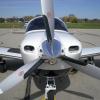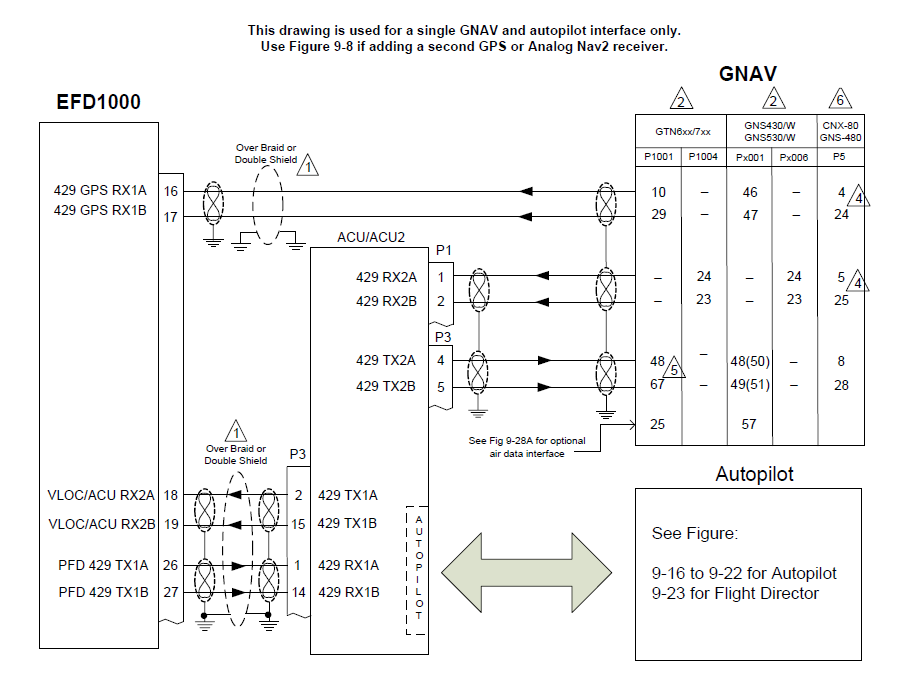-
Posts
2,530 -
Joined
-
Last visited
-
Days Won
5
Content Type
Profiles
Forums
Blogs
Gallery
Downloads
Events
Store
Everything posted by Cruiser
-
there is a long very small diameter tube that extends from the front of the engine case to the slinger on the prop backplate. It is probably broken at the engine
-

Justifying cost of a complete glass panel.
Cruiser replied to Dick Denenny's topic in Avionics/Panel Discussion
anything having to do with aviation is a "want' not a "need". Do what you want. -
having the same problem here with two brand new IFD440s software is the latest 10.2.4.1 WIFI is unusable.
-

Ovation Pre-Buy and Maintenance-Prone Areas
Cruiser replied to sbflyer's topic in Modern Mooney Discussion
what flysamo ^^ says above. While it is good to learn as much as you can about an airplane. Using an expert in the inspection is the smartest thing a buyer can do. there are several versions of Ovation by year. There were: Two blade/280 HP - you won't like these for climb performance, but fast Three blade/280 HP - standard from the factory Three blade/310 HP - STC Around 2002 the panel was "lowered" but most people can't tell the difference and don't really care. the DX versions had G1000s. The Early ones were non WAAS. Some had STEC 55x autopilots. These are expensive to upgrade. Don't pass up a look at the M20S - Eagle. There were only 63 built. These are economy models of the Ovation. There is one currently listed for sale in the MAPA Log. It seem attractively priced. -
In the March MAPA log there is a M20S listed for sale. It is basically an Ovation airframe with economy options. Looks to be priced attractively.
-
here are the different fill tubes in Mooneys. (source unknown) 4” neck, 75 gallons usable, 81 gallons total 2” neck, 89 gallons usable, 95 gallons total No neck, 102 gallons usable, 108 gallons total.
-
REFUELING Integrally sealed tanks, in forward, inboard sections of wing (LH & RH), carry the standard fuel quantity. With aircraft positioned on level ground, service each fuel tank after flight with 100 octane or 100LL aviation grade gasoline. The fuel tank contains 44.5 gal (168.45 li) fuel when level is at bottom of filler standpipe (M20R). An additional 5.5 gallons (21.0 li.) of fuel may be added up to the 0.37” hole located top of the neck in the standpipe for a total of 50.0 gallons (189 li.) in each tank.
-
there are three different versions of the fill tube. You are full to your POH quantity when at the bottom of the fill tube. The M20S has the longest (about six inches) and full is 75 gallons, the M20R collar is about 4 inches and is full at 89 gallons, the new Mooneys are full at the top of the tank in the fill cap. (106 gallons) I might have the lengths wrong, I have them somewhere and will take the time to look later, but you get the idea.
-
I don't think you can. The steel cage frame that the instrument panel bolts into is different. It would take major cutting and welding to lower it .
-
Why do you care ? With that much fuel I am pretty sure I can go someplace. I did drain my tanks and add 5 gallons of fuel at a time to verify the sight gauges were accurate. I found they were good all the way to 30 but that is on the ground. They consistently read 5 gallons low in flight. Besides the needles jump around so much it is nearly impossible to get a valid reading even is smooth air.
-

Installing the New Ultra style fuel caps on older model?
Cruiser replied to Schllc's topic in General Mooney Talk
Is the purpose of the new small diameter fuel caps design to prevent misfuelling with the larger Jet-A nozzles ? -

Accident in Johnson County Kansas Mooney M20 S
Cruiser replied to Frank B.'s topic in Mooney Safety & Accident Discussion
If the seat slid back the pilot would instinctively try to stop the travel by pulling on the yoke. (don't ask how I know this) it would not matter where the trim was set. Unless there was a co-pilot to take over control and the pilot let go of the yoke this is exactly the outcome to expect. Did the report mention anything about the pilot seat location ? What about the trim setting ? -

service bulletin ovation landing lights
Cruiser replied to flysamo's topic in Modern Mooney Discussion
-
Consider the M20S Eagle in your search. Only 65 were built. They are 100% Ovation with economy options. Better UL and can be upgraded with the 310 HP STC. the POH performance tables go to 20,000 feet. Some Ovations have been know to make it to 25,000 feet without too much effort.
-
The Avidyne IFD440 has separate ARINC 429 lines for VOR/ILS and GPS output. This airplane has an autopilot so the VOR/ILS ARINC 429 lines go to the Aspen ACU unit. The problem is with ARINC 429 input to the IFD440. It is wired correctly.
-
Background...... This airplane was upgraded from steam/analog six pack gauges to an Aspen E5 some time ago. Garmin 430W provided the GPS inputs. This plane flew without issue and the owner managed to do his IFR training and passed his IFR check ride without any issues. The Aspen E5 and GNS 430W are also connected to an S-TEC System 30 autopilot with Alt hold. Everything works. Recently the Aspen E5 was upgraded to a fully functioning Aspen EFD1000 MAX. The E5 was removed and the new EFD1000 installed. There were not changes to the wiring the swap was made and everything worked . Now, the Garmin GNS430W is swapped out and replaced with the Avidyne IFD440. The old 430W removed from the tray and the new IFD440 slides into the same tray. The configuration from the old 430W was copied and the new IFD440 setup the same way. ---- 429 data error on startup. Update. .... The Aspen to Garmin 430W ARINC 429 line (two wires) are connected to pins 50 and 51 (Channel #2) in the GPS connector. They have always been that way. So what does the 429 data from the Aspen to the GPS do ? Evidently this programming error was made on the Garmin install and there is no apparent problem in operations. We never would have know if the Avidyne did not report the error.
-
there is only one ARINC 429 line from the Aspen to the GPS. We checked the GNS 430W configuration settings before removal. Installed the IFD440 and set the ARINC 429 configuration the same. #1 Low - Honeywell EFIS, 429 out Low - GAMA Graphics w/Int the same as the old GNS 430W configuration. Turn on the power and we get the 429 data not rcvd error every time. Flew the airplane and everything seems to be working ok
-
Upgraded from a Garmin 430W which was working fine in the plane. Slide in replacement of Avidyne IFD440 gives this advisory. 429 data not rcvd The manual says "Contact the Avidyne Service Center for service" Everything seems to be working what should I look for failure wise.
-

Battery discharges with master off
Cruiser replied to Cloudmirth's topic in Vintage Mooneys (pre-J models)
buy a Concorde. -
Since this is your first flight I will assume this has never worked correctly before. The Traffic issue is well known but unclear of the cause. Avidyne says it is failure in the ADS-B system. I see this failure multiple times on every flight. Something about the aircraft ID data being cut out of the datastream. The ADS-B position invalid is just telling you that the transponder is not getting a valid GPS signal. If you did an FAA ADS-B test report I am certain it would fail. https://adsbperformance.faa.gov/PAPRRequest.aspx You show two different issues on the Aspens. On the PFD it shows your Nav source and flight plan data is from GPS1 and is green so it should be valid. but on the MFD you have a yellow RSM GPS warning which means the GPS data is invalid. !! Sounds like a trip back to the avionics shop to me.
-
IF these wires are connected from the G5 ------> the transponder I would guess they wired it so you can get the Altitude data on either the RS232 OR the ARINC429 lines. The ONLY connection needed from the transponder would be a GPS source if it is not provided from some other (GNS400W) source. IF you used the RS232 lines for that, you would need the ARINC lines for something else. If you have the G5 connected to the GNS400W, you will not need any connection to the transponder as far as I can see.
-
the three wires in the middle plus the two on the right of them need Garmin pins crimped on the ends. The wire on the left needs a blue ring terminal connector and connects to ground. .




